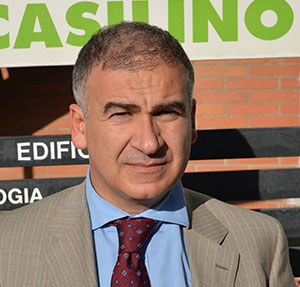
New research published in the Journal of the American College of Cardiology indicates that a wide/and or large S-wave in lead I is a powerful predictor of life-threatening ventricular arrhythmias in Brugada Syndrome patients with no history of cardiac arrest at presentation.
“Risk stratification in asymptomatic patients remains by far the most important yet unresolved clinical problem in Brugada Syndrome,” write the authors of the new study, led by Leonardo Calò, Policlinico Casilino, Rome, Italy.
Several electrocardiographic markers of ventricular depolarisation and repolarisation have been reported to identify high-risk patients with Brugada Syndrome. However, the authors suggest, conclusions regarding the clinical impact of these markers “have been inconsistent”. Some studies have suggested that the pathophysiological basis of this Syndrome is a conduction delay in the right ventricular outflow tract (RVOT).
Explaining the rationale behind this study, Calò and colleagues note that “The so-called third vector, which is directed upward and somewhat to the right and backward, generates the S-wave in lead I. This vector is determined by electrical activation of the basal region of both ventricles and by depolarisation of the RVOT. A prominent S-wave in lead I is typically present in cases of congenital heart disease, valvular heart disease, and cor pulmonale that cause right ventricular enlargement and fibrosis. Thus, we hypothesised that a deep and/ or large S-wave in lead I in Brugada Syndrome would reveal a conduction delay over the RVOT and could be used to identify high-risk patients.”
The study analysed data from 347 consecutive patients (78.4% male; mean age 45±13.1 years) at four Italian centres with spontaneous type I Brugada Syndrome by electrocardiogram parameters but with no history of cardiac arrest (including 91.1% asymptomatic at presentation, 5.2% with a history of atrial fibrillation, and 4% with a history of arrhythmic syncope). Electrocardiographic characteristics at the first clinic visit were analysed to predict ventricular fibrillation or sudden cardiac death during follow-up.
“During follow-up (48±38 months), 276 (79.5%) patients remained asymptomatic, 39 (11.2%) developed syncope, and 32 (9.2%) developed ventricular fibrillation or sudden cardiac death,” the authors report. Patients who developed ventricular fibrillation or sudden cardiac death had a lower prevalence of SCN5A gene mutations (p=0.009) and a higher prevalence of positive electrophysiological study results (p<0.0001), a family history of sudden cardiac death (p=0.03), and atrial fibrillation (p<0.0001).
“The most powerful marker for ventricular fibrillation or sudden cardiac death was a significant S-wave (≥0.1mV and/or ≥40ms) in lead I,” the authors write. “In the multivariate analysis, the duration of S-wave in lead I ≥40ms (hazard ratio 39.1) and atrial fibrillation (hazard ratio 3.7) were independent predictors of ventricular fibrillation or sudden cardiac death during follow-up,” they continue. Electroanatomic mapping in 12 patients showed an endocardial activation time “significantly longer” in patients with an S-wave in lead I, which Calò et al attribute to “a significant delay in the anterolateral right ventricular outflow tract”.
Speaking about the relevance of these findings in clinical practice, Calò told Cardiac Rhythm News: “The presence of a wide and/or large S wave in lead I in Brugada syndrome, expression of a delayed activation in the right ventricle outflow tract, can be used as a potential novel marker of sudden cardiac death risk stratification. But the most important finding of this study is that the absence of S wave in Brugada type can reassure physician and patient.”
In an accompanying editorial comment, Arthur Wilde, University of Amsterdam, Amsterdam, The Netherlands, and Pieter G Postema, Princess Al-Jawhara Al-Brahim Centre of Excellence in Research of Hereditary Disorders, Jeddah, Saudi Arabia, write that “the study by Caló et al suggests the prognostic value of electrocardiographic parameters of terminal right ventricular conduction delay in so far asymptomatic Brugada syndrome patients with a spontaneous type I electrocardiogram. In particular, the absence of a deep and wide S-wave in lead I is a potentially reassuring parameter with a very high negative predictive value that should make one even more reluctant to continue with primary prevention implantable cardioverter-defibrillator implantation.”












